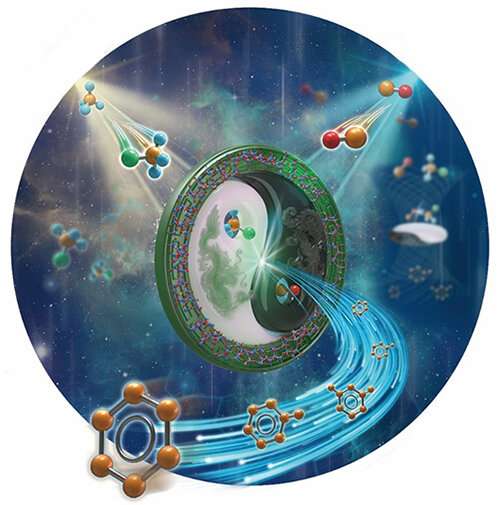New strategy enhances aromatics selectivity in methane conversion

Methane, the main constituent in shale gas and flammable ice, is expected to replace petroleum to produce high value-added chemicals such as aromatics.
Methane is relatively highly inert, which is caused by the high C-H bond strength and supersymmetric structure and hinders its applications.
Recently, a research team led by Prof. Liu Zhongmin and Prof. Zhu Wenliang from the Dalian Institute of Chemical Physics (DICP) of the Chinese Academy of Sciences (CAS) developed a strategy for the transformation of methane into aromatics by coupling of CH3Cl with CO over H-zeolites.
This study was published in Angewandte Chemie International Edition on Feb. 1.
The researchers used H-ZSM-5 as catalysts to achieve high aromatics selectivity as well as high selectivity of benzene, toluene, and xylene (BTX).
They found that the selectivity to aromatics increased from 39.0% to 79.3% after introducing CO, and the corresponding BTX selectivity increased from 17.7% to 48.0% at 2.0 MPa, 673 K. After optimizing reaction conditions, the aromatics selectivity reached as high as 82.2%, and BTX selectivity as high as 59.3%.
Moreover, they discovered that 2,3-dimethyl-2-cyclopentene-1-one (DMCPO) was generated from acetyl groups and olefins. And CO was proven to be inserted into the DMCPO and aromatics rings.
Then they proposed a new aromatization mechanism, including the formation of the above intermediates, which conspicuously weakened the hydrogen transfer reaction, resulting in an increase in aromatics selectivity and a drop in alkanes.
"Our study broadens approaches toward the transformation of methane into chemicals, and ensure the sustainable development of natural gas in an environmental pathway," said Prof. Zhu.
More information: Xudong Fang et al, Highly Enhanced Aromatics Selectivity by Coupling of Chloromethane and Carbon Monoxide over H‐ZSM‐5, Angewandte Chemie International Edition (2022). DOI: 10.1002/anie.202114953
Journal information: Angewandte Chemie International Edition
Provided by Chinese Academy of Sciences





















